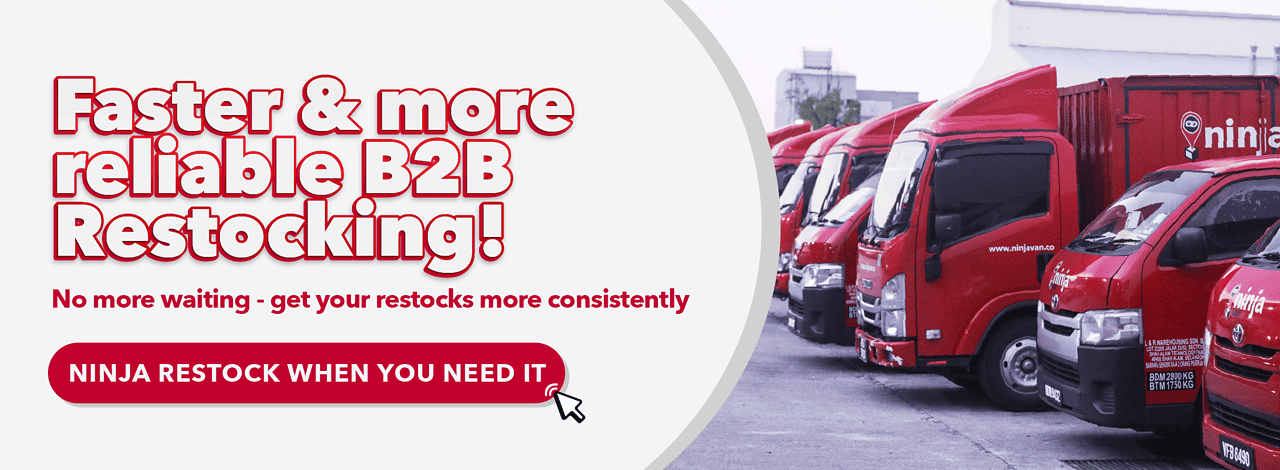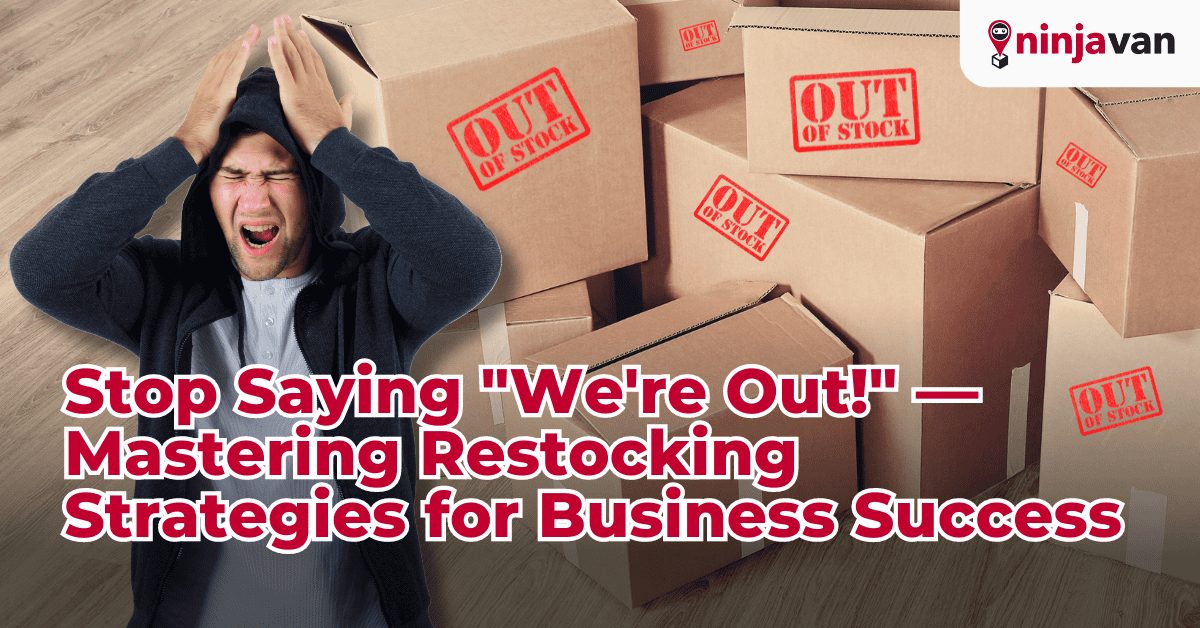Have you ever had a customer walk into your store, ready to buy, only to be met with the dreaded “We’re out!”? Imagine their frustration, and the lost sale for your business. Stockouts happen, but in today’s competitive market, they can be a major roadblock to success.
The good news is, there’s a way to stop those “We’re out!” moments and ensure your shelves are always stocked with the right products. This blog post will guide you through mastering restocking strategies, leveraging fast stock replenishment and real-time tracking to keep your customers happy and your business thriving.
The High Cost of Saying “We’re Out!”
The impact of stockouts goes far beyond the immediate loss of a single sale. Here’s why empty shelves can seriously hurt your bottom line:
- Lost Revenue: This is the most obvious consequence. Customers who can’t find the item they want will simply take their business elsewhere. Studies by the IHL Group suggest these losses can reach staggering figures, with inventory distortion (including stockouts) costing retailers nearly $1.8 trillion globally in 2023. Imagine the lost revenue potential for your specific business.
- Damaged Customer Loyalty: Frustrated customers who encounter stockouts are less likely to return. In an era where online reviews and fast shopping alternatives are booming, negative experiences spread quickly, impacting your brand reputation and long-term customer loyalty. A McKinsey survey found that a whopping 71% of consumers switch brands or retailers after a stockout experience.
- Increased Operational Costs: Stockouts can lead to a domino effect of inefficiencies. Expediting orders to replenish stock often comes at a premium cost, impacting your profit margins. Additionally, dealing with frustrated customer inquiries and potential returns adds strain on your customer service team.
Mastering Restocking Strategies: Keeping Your Shelves Full and Your Customers Happy
The good news is, you don’t have to resign yourself to the inevitable “We’re out!” scenario. By implementing effective restocking strategies, you can ensure your shelves are consistently stocked with the right products, at the right time.
Here are the key components to mastering this crucial aspect of inventory management:
#1. The Importance of Inventory Management
Effective restocking relies on a solid foundation – proper inventory management. This involves accurately tracking your stock levels, understanding sales trends, and forecasting future demand. Having a clear picture of your inventory allows you to make informed decisions about when and how much to restock.
There are several ways to improve your inventory management practices, such as:
- Regular inventory audits: Conduct regular checks to ensure physical inventory matches your system records.
- ABC analysis: This method categorises products based on their value and turnover, helping you prioritise your restocking efforts.
- Sales forecasting: Utilise historical sales data and market trends to predict future demand and potential spikes.
#2. Benefits of Real-time Inventory Tracking
Gone are the days of relying on outdated inventory spreadsheets. Real-time inventory tracking systems provide instant access to accurate stock levels across all your locations. This allows you to:
- React quickly to demand fluctuations: Identify products selling faster than anticipated and trigger immediate restocking orders.
- Minimise stockouts: With real-time data, you can ensure safety stock levels are maintained, preventing unexpected empty shelves.
- Improve decision-making: Real-time data empowers you to make informed restocking decisions based on actual sales data, not guesswork.
#3. Fast Stock Replenishment Techniques
Real-time data is your weapon against stockouts. Here are key techniques:
- Reorder Points & Safety Stock: Set minimum inventory levels that trigger restocks and maintain a buffer for unexpected surges.
- Vendor-Managed Inventory (VMI): Partner with suppliers to manage your stock and automatically send replenishments.
- Warehouse Optimization: Streamline picking and packing with strategic item placement, barcoding, and automation.
- Drop Shipping: Consider drop shipping for specific items to reduce storage needs and expedite restocking.

Implementing Effective Restocking Strategies: Putting Theory into Practice
Now that you understand the importance of strong inventory management and the power of fast stock replenishment techniques, it’s time to put theory into practice. Here’s how to implement effective restocking strategies for your business:
#1. Choosing the Right Replenishment Method
There’s no one-size-fits-all approach to restocking. The best method for you depends on your specific business needs and product types. Here are some common methods to consider:
- Periodic Review: Replenish inventory at predetermined intervals, ideal for slow-moving or predictable demand items.
- Fixed Order Quantity (FOQ): Order a fixed amount of inventory whenever stock reaches a reorder point, suitable for stable demand products.
- Economic Order Quantity (EOQ): This method optimises order quantity to minimise total inventory holding and ordering costs, good for high-demand products.
#2. Technology Solutions for Streamlined Restocking
Gone are the days of manual restocking calculations. Inventory management software can automate your restocking processes, saving time and resources. These systems offer:
- Automated Reorder Points: Set automatic triggers for restocking based on pre-defined parameters.
- Demand Forecasting: Utilise software to predict future demand and suggest optimal order quantities.
- Inventory Reporting & Analytics: Gain valuable insights into sales trends and stock movement to optimise future restocking decisions.
#3. Building Strong Supplier Relationships
Effective restocking isn’t a solo act. Building strong relationships with your suppliers is crucial for ensuring timely deliveries and reliable stock availability. Here’s how:
- Clear Communication: Maintain open communication with your suppliers, providing accurate forecasts and lead time requirements.
- Negotiate Favourable Terms: Discuss lead times, minimum order quantities, and potential discounts for bulk orders.
- Collaborative Planning: Explore collaborative planning, forecasting, and replenishment (CPFR) with key suppliers to optimise inventory management throughout the supply chain.
Stop Saying “We’re Out!” – Take Control with Ninja Restock
Imagine never having to say “We’re out!” again. By following the restocking strategies outlined here – strong inventory management, real-time tracking, and efficient replenishment techniques – you can keep your shelves stocked and customers happy.
But managing restocking across locations and suppliers can be overwhelming.
Introducing Ninja Restock by Ninja Van
This service simplifies everything. Ninja Restock provides real-time inventory tracking, faster deliveries, and cost-effective solutions, all designed to eliminate stockouts for B2B businesses.
Here’s how Ninja Restock helps:
- See everything clearly: Track inventory levels in real-time, across all locations.
- Restock faster: Get products back on shelves quicker with Ninja Van’s efficient delivery network.
- Save on costs: Enjoy cost-effective pricing and eliminate the need for expensive in-house transportation.
- Focus on what matters: Free up your team’s time for core business activities.
Stop stockouts, simplify restocking. Visit the Ninja Van website today to learn more about Ninja Restock and take control of your inventory management, or click the banner below to contact our experts.








